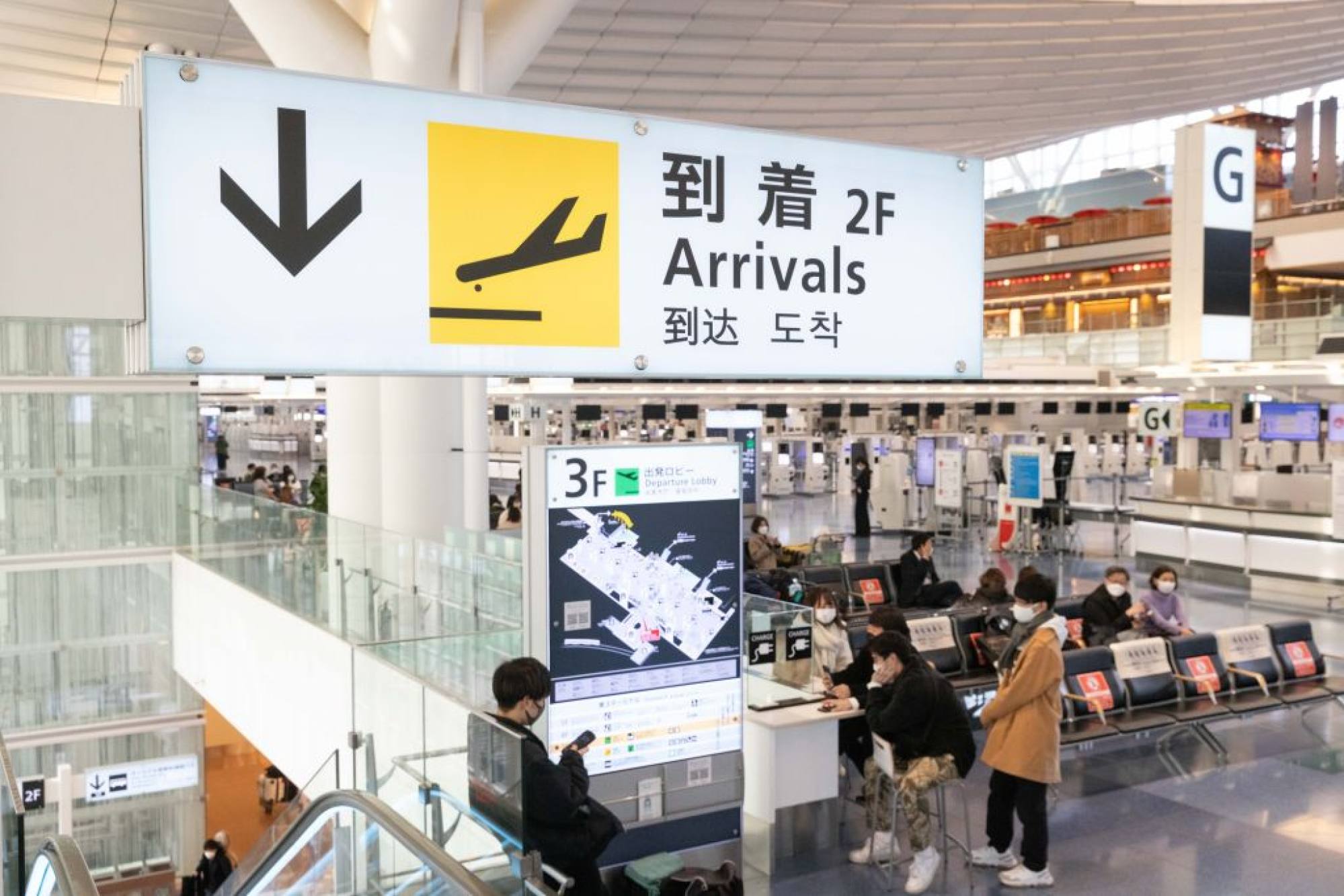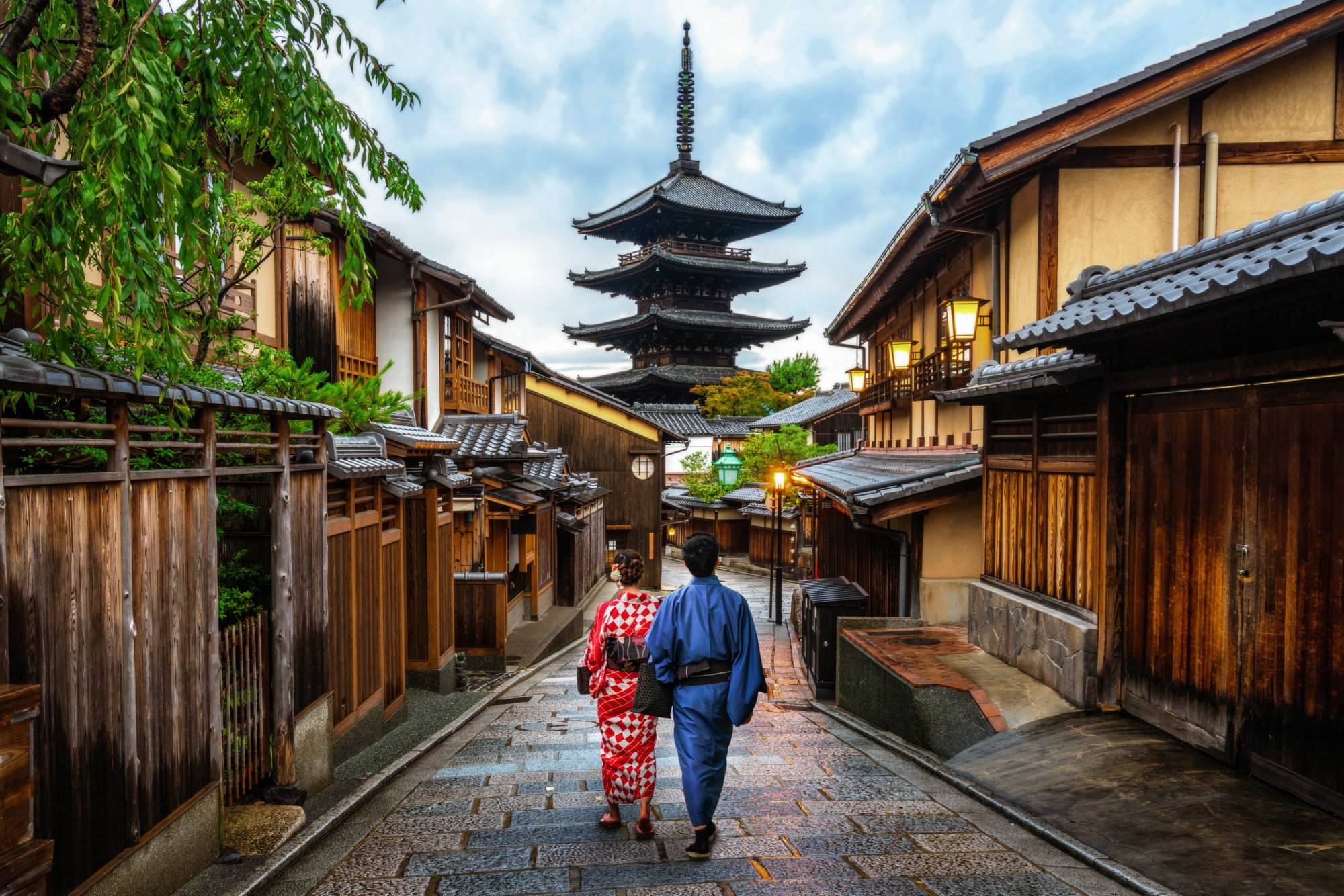
Coronavirus: Japan expected to reopen to tourists by July, may scrap tests for vaccinated visitors
- Japan is expected to double the number of people permitted into the country per day to 20,000 in June, may lift ban on foreign tourists the following month
- Infection numbers have stabilised to about 50,000 daily cases, while bars and restaurants have recently been allowed to fully reopen after two years
There are also reports the government is considering scrapping coronavirus tests for people arriving at airports who are fully vaccinated.
Currently, just 10,000 Japanese nationals, permanent residents, businesspeople and foreign students are allowed to enter the country each day. Foreign tourists are banned entirely.

With infection numbers apparently stabilising to below 50,000 new cases per day, the government is gradually easing restrictions that have been among the most stringent in the world.
Bars and restaurants have only recently been permitted to fully reopen after more than two years of restrictions on opening hours and the number of customers they could serve.
Japan plans for foreign tourists’ return with ‘North Korea-style’ tour groups
Restrictions eased on venues to save businesses
The government has been forced to ease regulations on entertainment venues because of the economic impact the extended and repeated states-of-emergency have had on businesses. There is also concern that wearing masks during the coming summer months will increase cases of heatstroke.
Nevertheless, Matsuno said the government would continue to monitor infection rates and update measures. Restrictions are expected to be quickly reimposed if a new variant is detected, or if cases spike again.
Face masks not needed outside if social distancing, Japan’s government says
The travel industry is particularly relieved to see incremental steps towards borders being reopened, for both the inbound and outbound sectors, although companies concede the recovery might be slow at first.
“We believe that there is a possibility of resuming tourism travel in the summer holidays, and we are working with our local counterparts to prepare for the sale of tours while ensuring that safety measures are in place,” said an official of domestic travel giant JTB Corp.
“Locally, the South Korean market is already reviving and the return of Japanese travellers is eagerly awaited as a result of Japan easing the rules,” the official told the Post.

Pent-up demand among travellers
Travel firms are reporting “huge amounts of pent-up demand” which is perhaps not a surprise given that people have been cooped up at home for more than two years.
There are hitches, however.
Tokyo still requires a three-day quarantine period for most arrivals, which is likely to be a concern for any Japanese planning a holiday overseas, and is unwilling to endure quarantine upon return for fear of testing positive for the virus will cause problems with their employers.
Yet another consideration for anyone booking a holiday is the sudden and dramatic collapse in the value of the yen against foreign currencies, notably the dollar.

The yen is down as much as 30 per cent from the last time tourists were able to freely visit Hawaii or Guam, traditionally among the most popular destinations for Japanese vacationers, making any trip significantly more expensive. As a result, many Japanese may still choose to holiday closer to home again this year.
With Japan’s national debt rising for a sixth consecutive year in 2021 to a record high, arrivals will be a welcome source of revenue. The Finance Ministry confirmed earlier this week that the national debt increased US$190 billion last year to $9.5 trillion at the end of March.
In post-Covid Japan, life is a celebration again. Why not Hong Kong, too?
Despite the pandemic, Japan’s tourist authorities apparently anticipate a rapid recovery in arrivals into the country, and are sticking with their ambitious target of 60 million arrivals in 2030 – a remarkable leap from the mere 6.79 million foreign tourists as recently as 2009.

